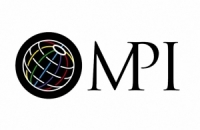Do you like printed materials?
I may be old fashioned, but I love printed materials. I honestly never thought I would read a book on a digital device until I linked my library card to my iPad a couple years ago and now have an abundance of free books to read at my whim (which let’s be honest is 10 minutes before I fall asleep each night). But in reality, I really like to physically hold and read something – I feel like I get so much more out of something printed than I do from a digital device. But I never knew if it is because I am a graphic designer who loves the richness of print. Apparently, it isn’t just a designer thing. There are scientific studies detailing how we (and it may become generational) learn differently from print versus screen. Ferris Jabr, in his article “The Reading Brain in the Digital Age: The Science of Paper versus Screens” for Scientific American, says it may change over time as generations use digital devices as learning tools and programmers learn how to tap into this idea of “deep” learning vs. superficial remembering – or something along those lines (I read this online ), but for now – we still learn better when physically holding our reading materials.
Kill print, or not?
So, what I have discovered is we shouldn’t kill print. Nope, not a good idea. But how do we incorporate print while still being cognizant of our environment and this major move toward digital? In our mission to reduce waste at our meetings, we have moved away from traditional printed items like the 60-page spread program/agenda and after conference questionnaires and opted for the adoption of event apps, event websites, and other online portals. In general, our clients have been all in. As my co-worker mentioned in her blog series “Paperless Event? Yes we did it!,” there was some pushback from participants at first, but after a couple of years they just expected it and took advantage of the networking power of the app (and these attendees were primarily boomers to Generation Xers). For marketing, Meetings Northwest often still print postcards and posters in addition to digital outreach to capture our different audiences. But are we in touch with the market?
Market Weigh-in
In fact, It may be “cool” to have printed materials again. Yes, I put parentheses around cool, because I am just that cool being on the fringe of millennialism (born in fourth quarter of 1981). I mean it makes sense on the outside, we millennials are about authentic experiences, and printed materials are “real” and “tangible,” while digital still seems “temporary” and “fluid” (even though we know that anything can be found again). Every article I have read on the future of events and meetings advocates the continued movement towards more “smart meetings” and “green meetings,” but according to Omnipress.com in their “Millennials and Print” infographic, “Millennials Still Value Print!” – so now what?
“Despite being raised with technology…89% of Millennials consume print
for educational and professional content .”
Omnipress.com, “Millennials and Print”
89% – That is a lot! It actually makes me a little giddy. I love designing print. It is tangible. It has weight. It is easy to read. You can mark it up. It leaves a lasting impression if it isn’t pitched in the first circular file through the door. Omnipress’ infographic implies that printed materials should be provided in certain situations – like to educate (ahem, isn’t that why we go to conferences and meetings? Well, that and networking). What does this exactly mean, especially for events?
What should be printed and what shouldn’t?
What to print is a great question and it entirely depends on your audience and event. Wahwahwahhhhhh! That isn’t helpful is it? We just need to be smart about it. Printed items should enhance and engage audiences. So, while maybe we don’t print a whole 60-page program, instead we provide a one-page (double-sided) handout or four-page spread with the brief schedule and some interesting facts and links to the conference app where they can learn more about their favorite sessions, interact with fellow participants and engage with the subject matter. Or maybe we have more posters for wayfinding and displaying fun facts about the conference and the area – creating more of an environment. Encourage speakers to create succinct and interesting takeaways for their sessions (better information, less printing). Allow speakers to post presentations and white papers to the conference website so participants can view them or print things as needed when they want to further dive into the information.
So now what?
The takeaway is that we cannot just omit print from our lives or meetings for that matter. Science says we still learn more from print. Thus, we can reduce the amount we print and be choosy about its placement and use – which elevates it and in turn makes it more useful and interesting. Make print new again, not just because it is trendy, but because it actually makes sense.
Yay, for me!
About the author:
Kasey B. Wright is a small town, small business kind of girl with nature in her heart. She grew-up working long hours at her parents general store in amazing Joseph, Oregon – Google it, oh wait, here’s a link – visit! Really- Arts, Camping, Resort on Wallowa Lake, Mountains, 52 high lakes, Gorgeous! Enough with the free advertisement, but truly it is amazing – Google it! Now days, if not twiddling away on her computer, painting, or mentally re-designing pretty much everything, she is outside with her family enjoying all of the adventures that lay beyond her front door (which in Missoula are abundant and basically start within a five-minute radius of her house). Her family, a husband of whom she met as a freshman in college (architect – I know two designers and yes, nothing ever gets done), our dog (neurotic first child wire-haired pointing griffon), cat (shelter cat – maybe the most adjusted member of our family), and twins (girl+boy) in chronological order, keep the adventure real! Oh yah, fish too (rarely claimed).








